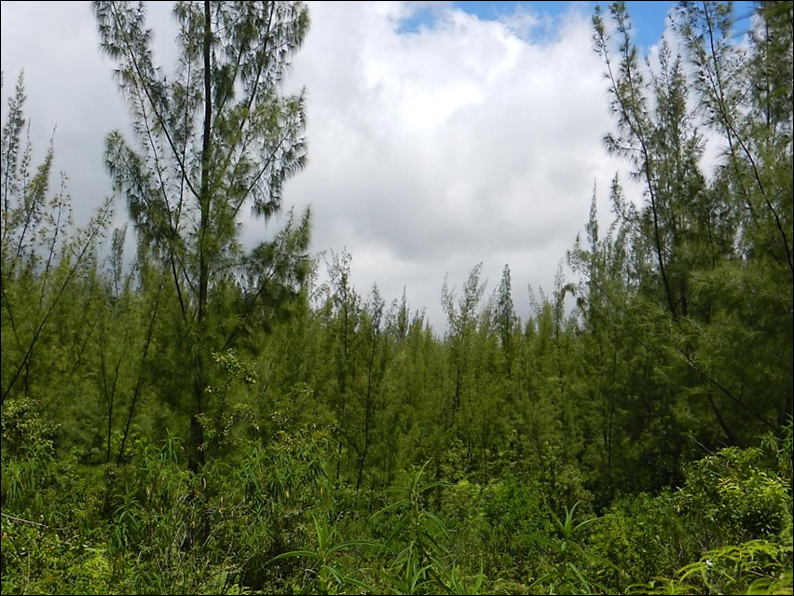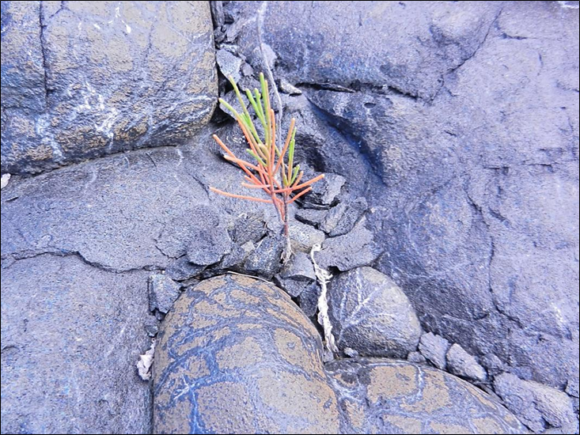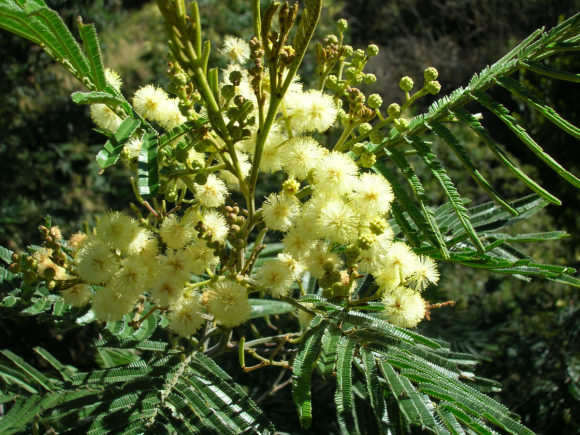The volcanic island of La Réunion in the Indian Ocean is the least disrupted of the biodiversity-rich islands of the Mascarene archipelago, with around 30% of the native vegetation still intact. She-oak or ironwood (Casuarina equisetifolia), a fast-growing tree native to Australia, Melanesia, Micronesia, the Philippines, Polynesia, and Southeast Asia, was introduced to La Réunion in 1738, mainly for use as firewood. Today, it is one of the most prominent invasive tree species on the volcanic lava flows of the active Piton de la Fournaise volcano in the south-east of the La Réunion.

A recent paper published by C·I·B Masters student Luke Potgieter and co-authors explored how interactions between natural disturbance, in this case volcanic lava flows, and invasions govern plant succession on these lava flows. Vegetation surveys from 1972 and 1990 were compared with results of a survey in 2012 to detail the spread of these trees over time. The team determined the influence of variables, including altitude, fire and lava flow age, on the abundance of C. equisetifolia.
The team found that lava flows facilitated the spread of C. equisetifolia, with the extent increasing twentyfold over the past 40 years, from 110 ha in 1972 to 2 373 ha in 2012. This species displace native species by changing the natural plant processes. The degree to which this species continues to spread across the island will determine the fate of the native lowland rain forests. This study demonstrated how a single invasive species can have a dramatic effect on the successional development of a landscape.

Read the paper
For more information on invasions of Casuarina species around the world, read this paper:
Another species of Casuarina, C. cunninghamiana, is invasive in parts of South Africa. For an assessment of its invasion ecology in the Western Cape, read this paper:
For more details on the status of plant invasions on La Réunion Island, read this paper:
For more information, contact Dave Richardson at rich@sun.ac.za



